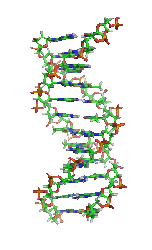June 17, 2013 A team from the New York Stem Cell Foundation (NYSCF) Research Institute and the Naomi Berrie Diabetes Center of Columbia University has generated patient-specific beta cells, or insulin-producing cells, that accurately reflect the features of maturity-onset diabetes of the young (MODY).
The researchers used skin cells of MODY patients to produce induced pluripotent stem (iPS) cells, from which they then made beta cells. Transplanted into a mouse, the stem cell-derived beta cells secreted insulin in a manner similar to that of the beta cells of MODY patients. Repair of the gene mutation restored insulin secretion to levels seen in cells obtained from healthy subjects. The findings were reported today in the Journal of Clinical Investigation.
Previous studies have demonstrated the ability of human embryonic stem cells and iPS cells to become beta cells that secrete insulin in response to glucose or other molecules. But the question remained as to whether stem cell-derived beta cells could accurately model genetic forms of diabetes and be used to develop and test potential therapies.
"We focused on MODY, a form of diabetes that affects approximately one in 10,000 people. While patients and other models have yielded important clinical insights into this disease, we were particularly interested in its molecular aspects -- how specific genes can affect responses to glucose by the beta cell," said co-senior author Dieter Egli, PhD, Senior Research Fellow at NYSCF, who was named a NYSCF-Robertson Stem Cell Investigator in 2012.
MODY is a genetically inherited form of diabetes. The most common form of MODY, type 2, results in a loss-of-function mutation in one copy of the gene that codes for the sugar-processing enzyme glucokinase (GCK). With type 2 MODY, higher glucose levels are required for GCK to metabolize glucose, leading to chronic, mildly elevated blood sugar levels and increased risk of vascular complications.
MODY patients are frequently misdiagnosed with type 1 or 2 diabetes. Proper diagnosis can not only change the patient's course of treatment but affect family members, who were previously unaware that they, too, might have this genetic disorder.
NYSCF scientists took skin cells from two Berrie Center type 2 MODY patients and "reprogrammed" -- or reverted -- them to an embryonic-like state to become iPS cells. To examine the effect of the GCK genetic mutation, they also created two genetically manipulated iPS cell lines for comparison: one fully functional (two correct copies of the GCK gene) and one with complete loss of function (two faulty copies of the GCK gene). They then generated beta cell precursors from the fully functional and loss-of-function iPS cell lines and transplanted the cells for further maturation into immune-compromised mice.
"Our ability to create insulin-producing cells from skin cells, and then to manipulate the GCK gene in these cells using recently developed molecular methods, made it possible to definitively test several critical aspects of the utility of stem cells for the study of human disease," said Haiqing Hua, PhD, lead author on the paper, a postdoctoral fellow in the Division of Molecular Genetics, Department of Pediatrics and Naomi Berrie Diabetes Center at Columbia University and the New York Stem Cell Foundation Research Institute.
When given a glucose tolerance test three months later, mice with MODY beta cells had decreased sensitivity to glucose but a normal response to other molecules that stimulate insulin secretion. This is the hallmark of MODY. Mice with two faulty copies of the GCK gene secreted no additional insulin in response to glucose. When the researchers repaired the GCK mutation using molecular techniques, cells with two restored copies of GCK responded normally to the glucose stress test. Unlike other reported techniques, the researchers' approach efficiently repaired the GCK mutation without introducing any potentially harmful additional DNA.
"Generation of patient-derived beta cells with gene correction could ultimately prove to be a useful cell-replacement therapy by restoring patients' ability to regulate their own glucose. This result is truly exciting," said Susan L. Solomon, Chief Executive Officer of The New York Stem Cell Foundation.
Follow this link:
Researchers demonstrate use of stem cells to analyze causes, treatment of diabetes

